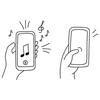How Napster Revolutionized Music Sampling?
In the late 1990s, a platform named Napster emerged as a groundbreaking force in the music industry. Known primarily for its controversial role in digital music sharing, Napster’s impact extended to various facets of music production and distribution, including music sampling. This article explores the influence of Napster on music sampling and the lasting legacy it has left on the industry.
The Dawn of Napster
Napster was launched in June 1999 by Shawn Fanning and Sean Parker as a peer-to-peer (P2P) file-sharing service. It allowed users to share and download music files from each other’s computers, creating a vast network of freely available music. This revolutionary service democratized access to music, making it possible to discover and enjoy a virtually unlimited array of songs.
Napster and the Evolution of Music Sampling
Music sampling involves taking a portion of a sound recording and reusing it in a different song or piece of music. Before Napster, obtaining samples required physical copies of records and tapes, or purchasing expensive digital samples. With Napster, aspiring artists and producers had free access to a vast archive of music. This availability made it easier for them to experiment with samples and create innovative compositions.
Accessibility and Creativity
One of the significant impacts of Napster on music sampling was the unprecedented accessibility it provided. Producers and artists who might not have had the means to purchase a wide range of music could now explore different genres and styles, enriching their creative process. This accessibility led to a surge in creativity, as artists could combine samples from diverse sources to produce unique sounds and genres.
The Legal Backlash
While Napster's contribution to music sampling was significant, it also faced substantial legal challenges. Major record labels and artists sued Napster for copyright infringement, arguing that it facilitated unauthorized distribution of copyrighted music. These legal battles highlighted the tension between accessibility to music for creative purposes and the protection of intellectual property rights.
Napster’s Transformation
Napster's legal troubles culminated in the shutdown of its original service in 2001. However, the platform's spirit lived on. Napster was eventually relaunched as a legitimate music streaming service, focusing on legal distribution of music. Despite its controversial beginnings, Napster's influence on music sampling continued to resonate through the industry.
The Legacy of Napster in Music Sampling
Napster's model set the stage for subsequent music distribution and sampling platforms. The concept of easy access to a vast music library was adopted and refined by other digital distribution services like Spotify, Apple Music, and SoundOn. These platforms offer extensive libraries of music that artists can study, sample, and incorporate into their work legally.
Modern Music Distribution and Sampling
Today, music sampling remains a critical component of music production. Digital music platforms have streamlined the process by providing licenses and royalty systems that compensate original artists for sampled works. Platforms like SoundOn offer comprehensive services for artists, from music distribution to marketing, helping them navigate the complex landscape of music rights and sampling legally and effectively.
As an artist, leveraging modern platforms like SoundOn can be a game-changer. These services not only simplify the distribution process but also provide tools for promotion and monetization, enabling you to focus on creativity while ensuring your work reaches a global audience.
Conclusion
Napster's impact on the music industry and music sampling is undeniable. It challenged the status quo, pushed the boundaries of accessibility, and set the stage for modern digital music distribution. Although it sparked significant legal controversies, Napster's legacy lives on through the platforms and practices it inspired. As we continue to see advancements in music technology, the spirit of innovation that Napster introduced remains a driving force in the evolution of music sampling.









